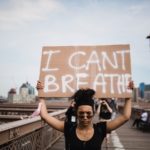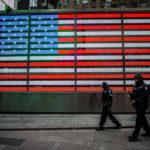On May 15, 1856, the abolitionist newspaper Independent Democrat published an article with the facetious title, “Can’t Take Care of Themselves.” The author listed formerly enslaved black men who “prove the falsehood of the charge often made by Slavocrats that Negroes . . . need masters to rule and feed them.” Among the men cited as thriving in a free society was Mr. Robert Harlan of Cincinnati.
Robert Harlan was raised in the same household as Supreme Court Justice John Marshall Harlan, and he is likely to have been the Justice’s half-brother. Robert’s refined cultural interests and his ability to succeed in every venture presented to him shaped John’s perceptions of what black Americans could achieve in freedom.
Justice Harlan was born into a slaveholding family in Kentucky in 1833. Harlan freed the people he held in bondage only after the ratification of the Thirteenth Amendment, which he had opposed. When President Rutherford B. Hayes appointed Harlan to the Supreme Court in 1877, anti-slavery Republicans mistrusted him, calling him “the sycophantic friend and supplicant tool” of white supremacists. Justice Harlan defied these expectations. In fact, he consistently stood against his colleagues on the court and wrote powerful dissents from a series of unjust and racially discriminatory decisions.
Peter Canellos’s new book, The Great Dissenter, dramatizes the ways in which Robert Harlan played a crucial role in making John Harlan the sole defender of black civil rights on the post-Reconstruction-era Supreme Court.
Start your day with Public Discourse
Sign up and get our daily essays sent straight to your inbox.Justice Harlan defied expectations. In fact, he consistently stood against his colleagues on the court and wrote powerful dissents from a series of unjust and racially discriminatory decisions.
A Shared Family History
Robert’s mother, Mary, was a slave on a plantation in Virginia owned by John’s extended family. When Robert was eight years old, Mary brought Robert to Kentucky to be raised by John’s father, James. In the antebellum South, the presence of a light-skinned black child in a white household would not have been unusual. What was unusual was that James raised Robert as a member of his family.
James personally escorted Robert to the schoolhouse where his sons were studying. The schoolmaster turned Robert away with the explanation that black students were not allowed to receive lessons. Barred from formal schooling, Robert barnstormed the country in search of work and business opportunities.
When John was born, Robert Harlan was a “strapping young sixteen-year-old with a golden smile.” In the eyes of young John Harlan, Robert loomed as a fearless man of action. Whereas his other brothers were sheltered and bookish, Robert was fully immersed in the rough and tumble rituals of frontier life.
In the etiquette that surrounded slave culture, family members would have assumed that James was Robert’s father, but few people would have dared talk about it. After Robert had grown into a man of wealth and prominence, he named his son Robert James Harlan, a tribute to the man whom he considered his father.
Robert was indulgent in his relationships with his white siblings. When John’s older, music-loving sister married, Robert bought her a handmade piano as a wedding gift. When James, Jr. became destitute and an alcoholic, Robert supported him for two years.
At various times in his life, Robert succeeded as a horse-racing impresario, a gold rush entrepreneur, a financier of black businesses, a world traveler, and an elected representative in the Ohio House of Representatives. Robert opened a store in San Francisco during the California gold rush, and he returned to Kentucky with a fortune. News reports counted his wealth at between $45,000 and $90,000—or between $1.4 million and $2.8 million in 2021 dollars. After Robert returned East from California in 1849, he took his wealth from Kentucky to the free state of Ohio, where a black man could pursue business ventures in an atmosphere of relative freedom.
With his large house, fashionable clothing, and mixed-race heritage, Robert came to represent the distinctive culture developed by America’s aristocrats of color. When traveling, Robert and his powerful black friends, such as Frederick Douglass, Louisiana Governor P.B.S. Pinchback, and Howard Law School founder John Mercer Langston, would stay in one another’s homes and host lavish dinners to introduce one another to local black leaders. Robert raised his children in a world of cosmopolitan sophistication, community service, political activism, and appreciation of the arts. Robert helped finance the first public school for black children sanctioned by the Cincinnati school board, which opened in 1858. He also held the lease on the Duma House, a hotel that was the “beating heart of the Cincinnati black community, honeycombed with hiding places for runaway slaves.”
Even when faced with stiff resistance, Robert urged African-Americans to keep their faith in American institutions. He fought for legislation to allow black people access to inns, restaurants, and public transportation, while he founded schools and led Ohio’s first black state militia. The New York World stated that Robert’s influence in black America rivaled that of Frederick Douglass.
Canellos credits Harlan’s religious faith with giving him the courage to refuse to endorse the moral blindness of his peers on the court.
The Great Dissenter
Robert, John had to recognize, was vastly more successful than any of his white brothers. With a man like Robert in his family, John could never embrace the notions of black inferiority that lay behind the views of his colleagues on the Supreme Court.
To the surprise of his critics, Harlan turned out to be the sole defender of civil rights in a series of atrocious Supreme Court cases that sharply limited the scope of the Fourteenth Amendment. In The Civil Rights Cases (1883), the Court ruled that the Amendment applied only to the actions of state governments. Harlan dissented, arguing that theaters, private transportation providers, and innkeepers who perform public functions on behalf of the state should be subject to Congress’s power to enforce the Fourteenth Amendment. Harlan wrote his dissenting opinion with the inkwell with which Chief Justice Roger B. Taney wrote Dred Scott v. Sandford, which he considered to be America’s original judicial sin. It appalled Harlan that the same Court that upheld Congress’s power to force private individuals to turn over runaway slaves would, two decades later, deny Congress’s power to prevent racial discrimination against freed men and women in places of public accommodation.
“I insist that the national legislature may, without transcending the limits of the Constitution, do for human liberty and the fundamental rights of citizenship, what it did, with the sanction of the Court, for the protection of slavery and the rights of the masters of fugitive slaves,” Harlan wrote. In a letter to John Harlan, Frederick Douglass hailed his lonely stand in the Civil Rights cases, writing “one man with God is a majority.”
Canellos credits Harlan’s religious faith with giving him the courage to refuse to endorse the moral blindness of his peers on the court. “A devout Presbyterian and weekly Sunday school teacher, [Harlan] . . . could not simply defer to his colleagues or follow the precedents handed down by his judicial forbears without endorsing them in a moral sense,” Canellos wrote.
Harlan’s most masterful opinion is his dissent in Plessy v. Ferguson, in which eight justices defended a Louisiana law that mandated separate railroad cars for black customers. “The destinies of the two races in this country are inextricably linked,” Harlan wrote,
and the interests of both require that the common government of all not allow the seeds of racial hatred to be sown under the sanction of law. . . . In the eyes of the law, there is no superior, dominant ruling class of citizens in this country. There is no caste here. Our Constitution is color blind and does not know or tolerate classes among its citizens.
In 1906, Harlan intervened in the case of Ed Johnson. Johnson was convicted of raping a white woman at night in a cemetery even though the victim testified that she wasn’t sure that her assailant was black. At the request of two black lawyers, Justice Harlan ordered a stay of Johnson’s execution. A white mob responded by descending on a Chattanooga jail and dragging Johnson from his cell. The mob murdered Johnson and pinned a note to his body, saying, “To Chief Harlan. Here is your Negro. Thanks for your kind consideration of him. You can find him at the morgue.” Harlan convinced his fellow Justices to try local officials who failed to protect Johnson for contempt of court. This was the only time in history that the Supreme Court functioned as a criminal trial court.
At the height of the Gilded Age, Harlan continued his dissents. He advocated breaking up corporate monopolies, instituting an income tax, and protecting children and other exploited workers. In the Insular cases (1901), Harlan sought to extend legal protections to the people of newly acquired US territories in Hawaii, Philippines, and Puerto Rico.
In Hawaii v. Mankichi, Harlan wrote:
[If] under the exactions of trade and commerce, and to gratify an ambition to become the dominant power on earth, the United States will acquire territories in every direction . . . whose inhabitants will be regarded as “subjects” or “dependent peoples,” [this will] engraft on our republican institutions a colonial system entirely foreign to the genius of our government and abhorrent to the principles that underlie and pervade our Constitution.
When Justice Harlan died in 1911, black congregations around the country organized spontaneous memorial services. The massive Metropolitan African Methodist Episcopal Church in Washington, D.C. hosted a multi-faith service in which Harlan’s Plessy dissent was read out loud.
By 1911, segregation had betrayed the principles that the Harlan brothers fought to safeguard. In 1917, Robert Harlan’s son, Robert James Harlan, had his federal salary as clerk in the Register of the Treasury cut by the Woodrow Wilson administration, in an effort to drive black people out of the federal workforce. “You cannot understand how hurtful it is to me to be reduced when on every side, salaries are being increased,” Robert James wrote to his friend and high school classmate, former president William Howard Taft. “And having a clean record, and a high rating for efficiency, makes it more humiliating.”
In the 1950s, the NAACP found in Harlan’s Plessy dissent the legal basis to overturn segregation. Constance Baker Motley, who clerked for Justice Thurgood Marshall, remembers, “[Thurgood] Marshall would read aloud passages from Harlan’s amazing dissent. I don’t believe we ever filed a brief in the pre-Brown days in which a portion of that opinion was not quoted.” In the brief to the Supreme Court in Brown v. Board of Education, Marshall quoted directly from Harlan, writing, “It is the dissenting opinion of Justice Harlan, rather than the majority opinion in Plessy v. Ferguson that is in keeping with the scope and meaning of the Fourteenth Amendment.” The Supreme Court, under Chief Justice Earl Warren, unanimously agreed.
When Justice Marshall died in 1993, Judge Motley wrote:
Marshall admired the courage of Harlan more than [that of] any justice who has ever sat on the Supreme Court. Even Chief Justice Warren’s forthright and moving decision for the court in Brown did not affect Marshall in the same way. Earl Warren was writing for a unanimous Supreme Court. Harlan was a solitary and lonely figure writing for posterity.
John Harlan does not occupy the place he deserves in the popular imagination, and Robert is virtually unknown. Most of the literature about John comes in the form of scholarly commentaries on his judicial opinions. The Great Dissenter is an important contribution because Canellos is a gifted storyteller, and his legal analysis is easily accessible to non-specialists. As a journalist who has worked for The Boston Globe and Politico, Canellos is the perfect person to turn a Supreme Court justice and his fearless, entrepreneurial brother into the national heroes they deserve to be.














